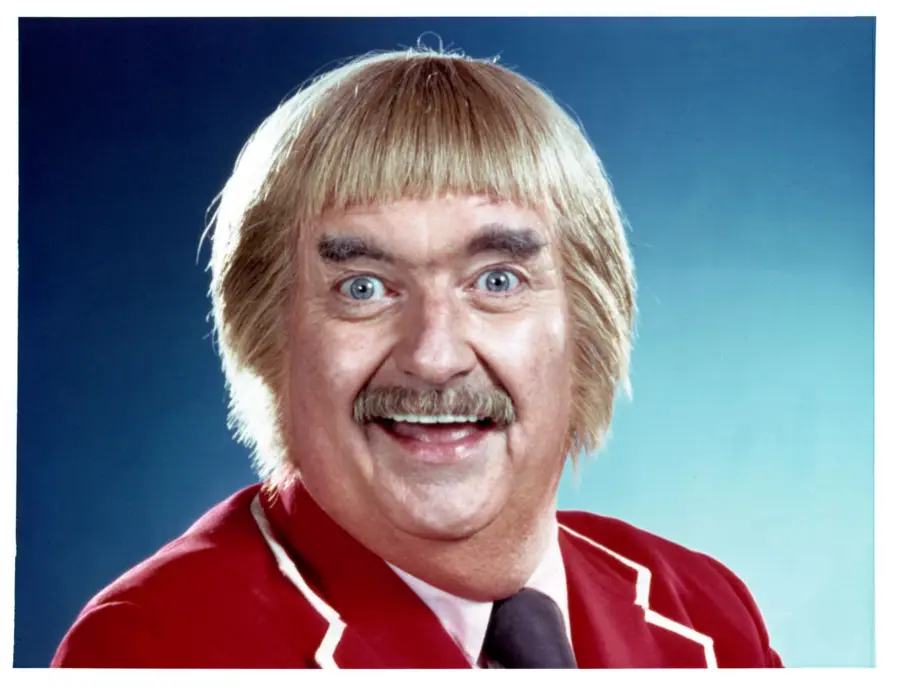What was Bob Keeshan's net worth?
Bob Keeshan was an American actor and producer who had a net worth of $3 million at the time of his death in 2004. That's the same as around $4 million in today's dollars. Bob Keeshan passed away on January 23, 2004, at 76 years old.
Bob Keeshan was a pioneering force in children's television, best known for his iconic role as the soft-spoken, grandfatherly Captain Kangaroo. Over nearly three decades on air, Keeshan reshaped educational programming by emphasizing patience, kindness, and direct connection with young viewers. He first rose to prominence as the original Clarabell the Clown on "Howdy Doody," but it was the debut of "Captain Kangaroo" in 1955 that made him a household name. The show became the longest-running nationally broadcast children's program of its time and was cherished by multiple generations. Keeshan avoided flashy gimmicks and slapstick chaos, opting instead for thoughtful storytelling, gentle humor, and moral lessons. A tireless advocate for children's well-being, he frequently spoke out against violent programming and encouraged active parental involvement in early education. Off camera, Keeshan served on school boards, wrote books, and helped shape the broader cultural conversation around childhood. His influence on American television and family life remains unmatched.
Early Life
Robert James Keeshan was born on June 27, 1927, in Lynbrook, Long Island, New York, to Joseph Keeshan, a grocery store manager, and Margaret Conroy, a homemaker. The family, of Irish descent on both sides, later relocated to a modest home in Forest Hills after Joseph lost his job when the Daniel Reeves chain was acquired. Young Bob worked Saturdays as a delivery boy, sorting soda bottles at his father's store.
At Forest Hills High School, Keeshan developed a love for radio and began producing plays broadcast over the school's loudspeaker system. His grades plummeted in 1943 after the sudden death of his mother from a heart attack, but a caring teacher, Gertrude Farley, helped him recover. In 1944, while still in school, Keeshan landed a coveted $13.50-a-week job as a page at NBC Studios in Rockefeller Center, where he seated audiences for radio shows. In 1945, he enlisted in the Marine Corps but was never deployed due to the war's end. He later enrolled at Fordham University with thoughts of becoming a lawyer.
Early Career in Television
Keeshan returned to NBC in 1946 and was assigned to a receptionist's desk next to the office of Bob Smith, better known as "Buffalo Bob." He began assisting Smith with historical research and soon found himself working on the set of what would become the "Howdy Doody" show. On January 3, 1948, Keeshan made his performing debut as Clarabell the Clown, a silent character known for spraying seltzer water and delighting children with his physical comedy.
Despite the popularity of Clarabell, Keeshan was fired in 1950 over a misunderstanding about union activity. After months of unemployment, ABC hired him to play Corny the Clown on "Time for Fun," where he spoke directly to the audience for the first time. He also hosted "Tinker's Workshop" in 1954. In 1955, CBS approached Keeshan about developing his own children's program—an offer that would change his life.
Captain Kangaroo
"Captain Kangaroo" premiered on October 3, 1955. Keeshan created the character after someone fashioned an oversized coat with deep pockets for him, prompting the name. Dressed in a red jacket and surrounded by a cast of colorful characters—including Mr. Green Jeans (played by Hugh Brannum), Mr. Moose, Bunny Rabbit, and Grandfather Clock—Keeshan crafted a calm, nurturing show unlike anything on television.
The show aired six days a week, including two live broadcasts each weekday morning—one for the East Coast and another for the Midwest. Keeshan commuted from Long Island daily, catching a 4:20 a.m. train and relying on three alarm clocks to ensure he never missed a broadcast. He insisted on talking directly to the camera and avoided studio audiences, believing the show should always feel one-on-one with each child watching at home.
For nearly 30 years and over 9,000 episodes, "Captain Kangaroo" was a staple of American childhood. CBS ended the show in 1984, just nine months shy of its 30th anniversary, to expand its morning news coverage.

(Photo by Michael Ochs Archives/Getty Images)
Advocacy and Later Years
Keeshan used his platform to advocate for children's education and responsible media. He disapproved of parents who treated television as a babysitter and criticized networks for broadcasting violent programming to young audiences.
From 1953 to 1958, he served on the West Islip Board of Education, calling the experience one of his most rewarding. He also lectured extensively and authored several books, including "She Loves Me… She Loves Me Not" (1963), "Growing Up Happy" (1989), and "Good Morning, Captain" (1996). He produced children's music recordings for Golden Records and Columbia, introducing kids to classical and contemporary music.
He was awarded the Peabody and Sylvania Awards, received commendations from the National Congress of Parents and Teachers, and earned honorary degrees from institutions including Dartmouth, Fordham, Bucknell, and Indiana State.
Personal Life
Bob Keeshan married Anne Jeanne Laurie in 1950, and the couple had three children: Derek, Laurie, and Maeve. Anne passed away in 1990. Keeshan enjoyed photography, sailing, fishing, and reading in his later years and was known to study French in his spare time.
He died on January 23, 2004, in Vermont at the age of 76. Though he had battled heart problems since the 1980s, his legacy remained undiminished.
/2016/12/bob-keeshan.png)
/2014/01/fred-rogers.jpg)
/2009/12/Willard-Scott.jpg)
/2017/11/GettyImages-1164542.jpg)
/2017/08/David-Hartman.png)
/2018/03/chuck.jpg)
/2009/09/Jennifer-Aniston.jpg)
/2020/06/taylor.png)
:strip_exif()/2009/09/P-Diddy.jpg)
:strip_exif()/2015/09/GettyImages-476575299.jpg)
/2019/04/rr.jpg)
/2009/11/George-Clooney.jpg)
/2020/04/Megan-Fox.jpg)
/2017/02/GettyImages-528215436.jpg)
/2009/09/Cristiano-Ronaldo.jpg)
/2020/01/lopez3.jpg)
/2019/10/denzel-washington-1.jpg)
/2016/12/bob-keeshan.png)
/2018/03/chuck.jpg)
/2015/02/terry-carter.jpg)
/2017/08/David-Hartman.png)
/2017/11/GettyImages-1164542.jpg)
/2014/09/GettyImages-74010660-e1749157481509.jpg)
/2013/07/GettyImages-73315374.jpg)
/2015/07/stephen-g-hill.jpg)
/2020/02/Angelina-Jolie.png)
/2018/03/GettyImages-821622848.jpg)
/2009/09/Brad-Pitt.jpg)
/2019/11/GettyImages-1094653148.jpg)